Introduction To Camels
If you’re interested in learning about the fascinating world of camels, then this blog post is for you. Camels are fascinating creatures that have been around for thousands of years, and have played an integral role in the survival and development of many civilizations throughout history.
Camels are part of the Camelidae family, which also includes llamas, alpacas, vicunas, and guanacos. There are two main types of camels: the dromedary, which has one hump, and the Bactrian camel, which has two humps. Camels are known for their unique adaptations that help them survive in the harsh desert environments where they live.
- Camels are able to survive for long periods of time without water, thanks to their ability to store fat in the humps on their back
- Their long eyelashes and bushy eyebrows protect their eyes from blowing sand and dust
- Camels can close their nostrils to prevent sand from entering their respiratory system
- They are able to regulate their body temperature in extreme heat by sweating heavily and then allowing their coats to dry in the sun
- Camels’ large, padded feet allow them to walk on sand without sinking, while also providing insulation against the hot desert sand
Camels have also been domesticated for thousands of years, and have proven to be invaluable to people in many parts of the world. They are commonly used for transportation, food, and clothing, and are also highly valued for their milk, which is a nutritious source of protein and vitamins.
Overall, camels are truly remarkable animals that continue to capture the imagination of people all over the world. In this blog post series, we will explore various aspects of their biology, history, and cultural significance in greater depth.
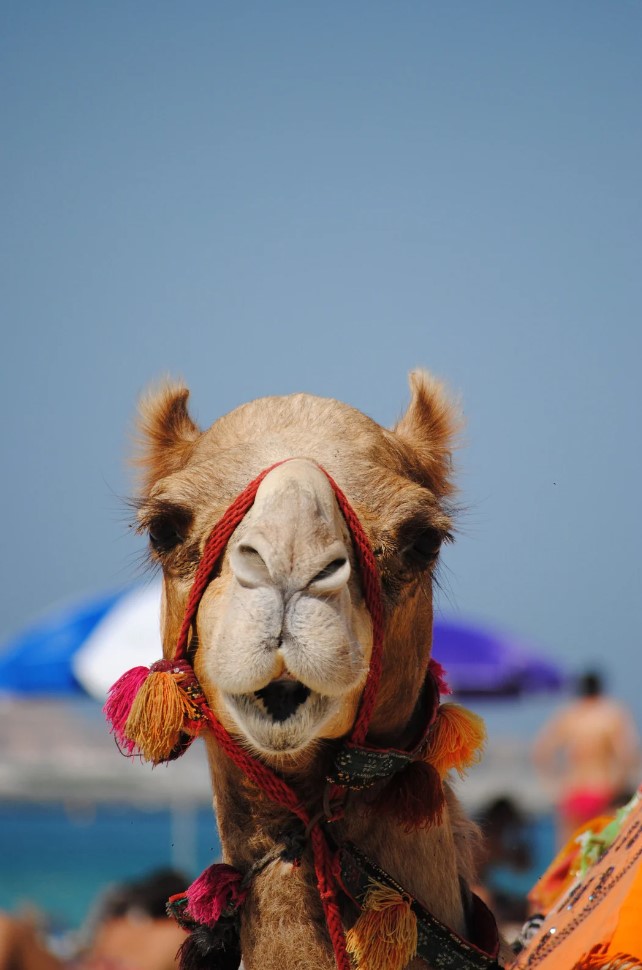
Types Of Camels
Camels are fascinating animals that have been known to man for centuries. They are known for their ability to survive in harsh desert conditions and have been used by humans for transportation, food, and even as a source of warmth. There are two main types of camels that are commonly known – the dromedary camel and the bactrian camel.
The dromedary camel, also known as the Arabian camel, is the most commonly known type of camel. They are found in the Middle East, and are mainly used for transportation, milk, and meat. The dromedary has one hump on their back which contains fat reserves that they can use for energy when food and water are scarce. The dromedary camel has long legs, which allows them to take long strides and cover large distances.
- The dromedary camel is the most commonly known type of camel.
- They are found in the Middle East.
- They are mainly used for transportation, milk, and meat.
The bactrian camel, on the other hand, is found in Central Asia, and is known for its two humps on its back. Like the dromedary camel, they are also used for transportation, milk, and meat. The two humps on their back are used to store fat reserves, which they can use for energy when food and water are scarce. Unlike the dromedary camel, the bactrian camel has shorter legs, which allows them to move around in rocky terrain with ease.
- The bactrian camel is found in Central Asia.
- They are known for their two humps on their back.
- The two humps are used to store fat reserves.
| Type of Camel | Location | Number of Humps | Uses |
|---|---|---|---|
| Dromedary Camel | Middle East | One | Transportation, milk, meat |
| Bactrian Camel | Central Asia | Two | Transportation, milk, meat |
Both types of camels are well adapted to desert life and rely on their fat reserves to survive in harsh conditions. They can also go long periods without water, which makes them ideal for life in the desert. While they are similar in many ways, they also have their unique features that make them stand out.
In conclusion, camels are amazing animals that have been able to survive in the harshest of conditions. They are used for transportation, milk, and meat by humans, and have been an integral part of life in the desert. Knowing the different types of camels is important, and can give you a better understanding of these fascinating animals.
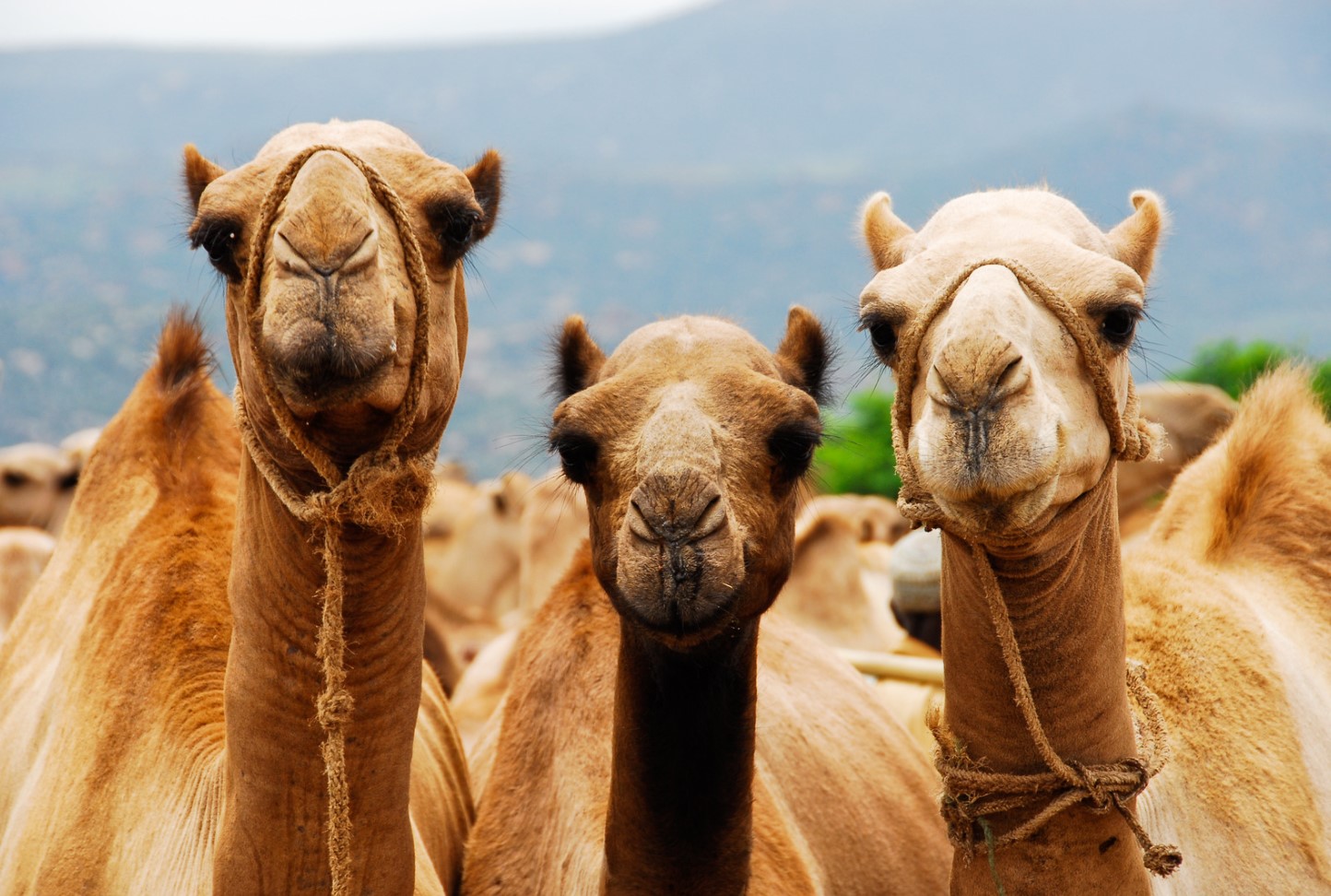
Dromedary Vs Bactrian Camels
If you are intrigued by the world of camels, you might be wondering about the differences between two of the most well-known species – the dromedary and the bactrian. Camels are native to the deserts of Africa and Asia, and are known for their unique adaptations that allow them to survive in harsh, hot environments. However, there are some key differences between these two types of camels that set them apart from each other. In this blog post, we will explore the characteristics of dromedary and bactrian camels, and learn about what makes them distinct from each other.
Firstly, it is important to note that dromedary camels are also known as Arabian camels, while bactrian camels are found in Central Asia. One of the most obvious differences between the two is their appearance. Dromedary camels have a single hump on their backs, while bactrian camels have two humps. These humps are actually storehouses of fat that help the camels to survive when food and water are scarce, and serve as a source of energy for the animal.
- Dromedary camels have one hump on their backs.
- Bactrian camels have two humps on their backs.
Bactrian camels have thicker fur than dromedary camels. This is because they need to survive in colder temperatures, and their thick coats help to keep them warm. Dromedary camels, on the other hand, have shorter fur that is better suited to warmer climates. Another key difference between the two is their temperament. Dromedary camels are more commonly used as pack animals and for transportation, while bactrian camels are often used for riding and as draft animals.
| Dromedary | Bactrian | |
|---|---|---|
| Humps | One | Two |
| Coat | Shorter fur | Thicker fur |
| Temperament | Pack animals and transportation | Riding and draft animals |
Overall, despite some similarities in terms of their adaptations for desert life, there are clear differences between dromedary and bactrian camels. Whether you are interested in camels for their historical significance, or simply fascinated by these unique animals, understanding the differences between various species can help you to gain a better appreciation for the diversity of life on our planet.
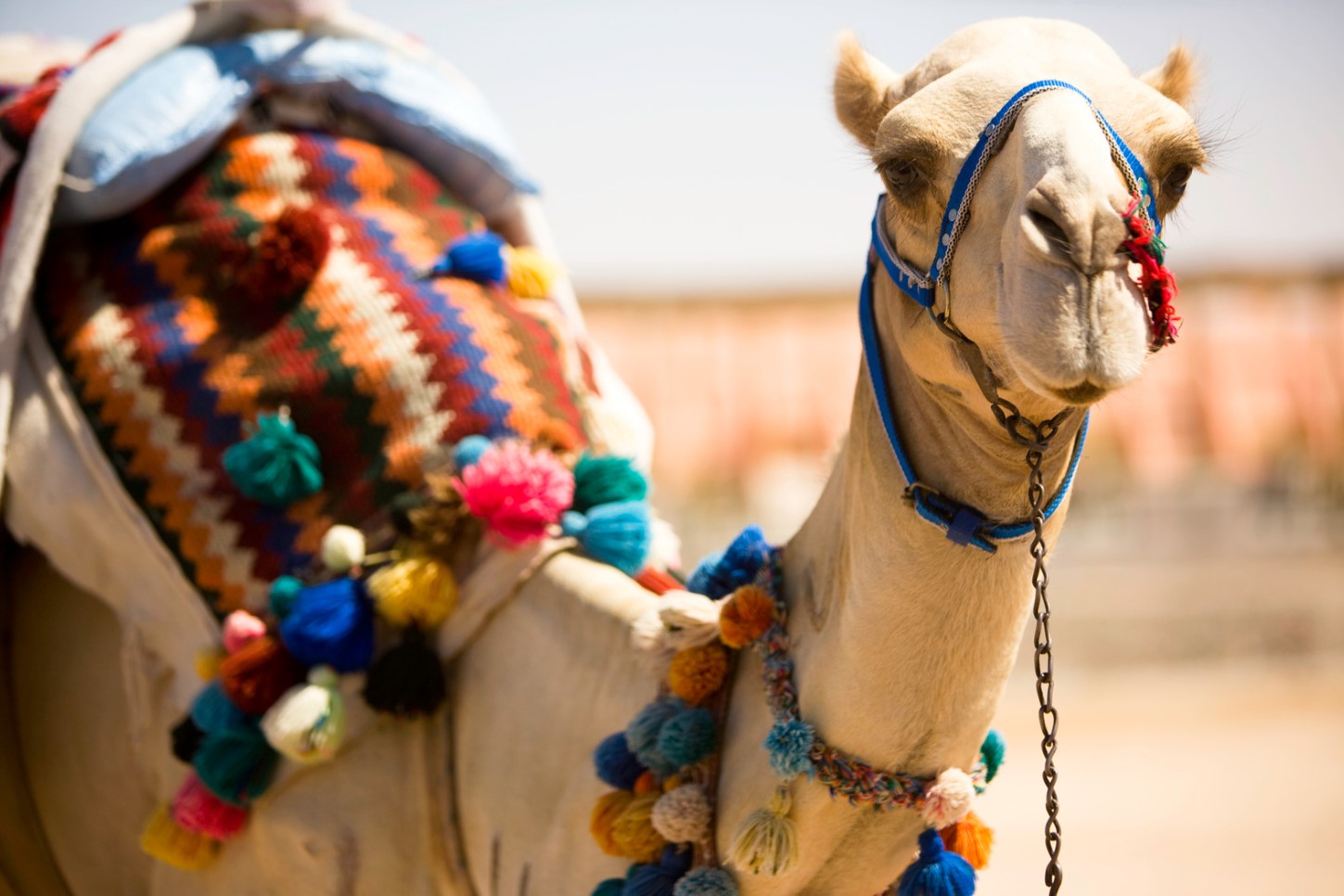
Camel Adaptations For Survival
The Camel is a unique animal that has evolved over the years to adapt to harsh and arid environments. Camels are particularly known for their ability to survive in the desert, and this is due to their numerous adaptations that allow them to survive long periods without water and tolerate high temperatures. These adaptations have made the camel an extraordinary animal, and they are still in use today to enhance its survival in various environments.
One of the unique features of the camel is its hump. Camels have one or two humps depending on the species, and they use these humps to store fat. When food and water are scarce, camels break down the fat in their humps to produce energy, which helps them to survive for long periods without food and water.
Another adaptation that camels possess is their ability to conserve water. Camels have a unique ability to reabsorb water from their urine, which helps them to conserve water in their bodies. They also have thick nasal tissue that prevents water from evaporating from their nose during exhalation. This helps them to limit the amount of water loss through respiration and prevent dehydration.
- Camels also have thick and long eyelashes that protect their eyes from the sand and dust that is common in the deserts. These eyelashes help to keep their eyes moisturized, and they can close their nostrils to prevent sand from getting into their lungs. This unique feature allows camels to adapt to the harsh and dusty desert environment.
- Their broad and sturdy feet allow them to move effortlessly on the sand, and they can travel long distances without getting tired. Their feet also have thick pads that help to distribute their weight over a large surface area, reducing pressure, and thus preventing them from sinking in the sand.
In conclusion, camels are fascinating animals that have adapted remarkably to their environment. The adaptations found in camels have made them suitable for survival in some of the harshest environments on earth. These adaptations include their humps, ability to conserve water, long eyelashes, and sturdy feet. It’s amazing how camels have mastered their adaptations and continue to thrive in the desert today.
Domestication Of Camels
The domestication of camels is a fascinating topic that dates back centuries ago. These majestic animals have been an integral part of human civilization for centuries, playing vital roles in transportation and trade. Camels are known for their incredible adaptability, making them a perfect fit for desert life. In this blog post, we will explore the history of camel domestication, the role of camels in ancient civilizations, and their importance for desert life.
Domestication of camels began around 4,000 years ago in the Arabian Peninsula. The Bedouins were the first to domesticate camels, mainly for transportation and as a source of milk and meat. Domesticated camels were a valuable asset for trade between various tribes, which contributed significantly to their value in ancient times.
Camels played a vital role in ancient civilizations, where they were used as pack animals for trade and transportation. They were also used in military operations as they could carry heavy loads and travel long distances without water. For instance, in ancient Egypt, camels were used to transport goods along the Nile River and across the desert. In ancient Rome, camels were used in chariot races as they were faster than horses.
The importance of camels for desert life cannot be overstated. They are well adapted to desert environments, making them ideal for arid regions. One of the remarkable adaptations of camels is their ability to go for long periods without water by storing a large amount of water in their stomachs. Camels are also adapted to tolerate high temperatures, making them perfect for life in the desert.
Camel domestication has also contributed significantly to the economies of many countries. Countries like Saudi Arabia, Somalia, and Sudan have large herds of camels, which contribute significantly to the local economy. Camels are a source of milk, meat, and leather, which are all used for various purposes.
In conclusion, the domestication of camels has a rich history that dates back thousands of years. They have played a vital role in transportation, trade, and even in ancient civilizations. The adaptability of camels has made them remarkably suited for life in the desert. Camels have made significant contributions to the economies of many countries and continue to be an essential part of the culture and daily life of people in various parts of the world.
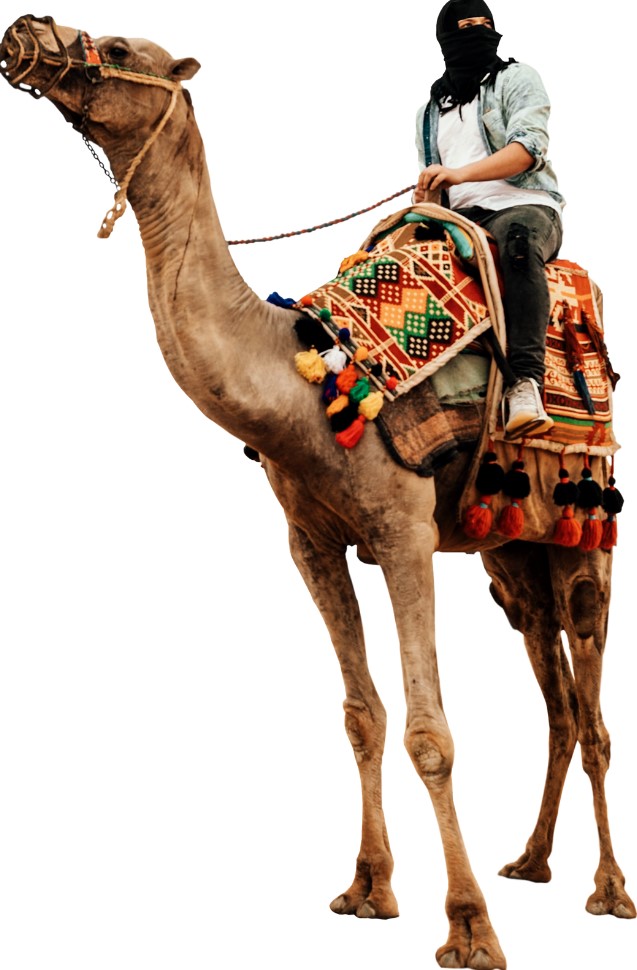
History Of Camel Domestication
Camel domestication can be traced back to at least 4,000 years ago. It is believed that the Bactrian camel was first domesticated in Central Asia while the Dromedary camel was domesticated later in the Arabian Peninsula. Domestication of camels played a significant role in the development of human civilization, especially in arid regions.
The domesticated camels were used for transportation of goods and people across the desert. They were also used for farming, milk, and meat production. During the ancient times, camels were highly valued and were often mentioned in religious texts and used as currency in some cultures.
Ancient Egyptians were the first to use camels for transportation and trade. They used camels to transport goods across the Sahara desert. The Persians also used camels for trade and transportation. They built the Silk Road, which was an extensive network of trade routes that connected the East and the West. Camels played a crucial role in the success of the Silk Road as they could survive long periods without food and water.
- The Greeks and Romans also used camels for various purposes, including transportation and combat.
- In the 7th century, camels were introduced to the Arabian Peninsula, where they were highly regarded by Arab nomads for their ability to survive in the harsh desert conditions.
- The Arabs also played a vital role in the spread of camels beyond the Middle East, as they used them to transport goods across North Africa and into Europe.
The domestication of the camel also had a significant impact on the nomadic way of life. The Bedouin tribes of the Middle East relied heavily on camels for transportation and trade. They often traveled long distances with their camels, living in tents and herding goats and sheep.
The introduction of railroads and automobiles in the 19th and 20th centuries, however, reduced the importance of camels in transportation. Nowadays, camels are mainly used for milk and meat production and as a tourist attraction in some parts of the world. Despite the challenges faced by camels in modern times, they continue to be an essential part of the economy and culture of many countries.
Role Of Camels İn Ancient Civilizations
Camels have played a significant role in human civilization for thousands of years. In ancient civilizations, these animals were used for a variety of purposes, from transportation to food and clothing. The domestication of camels is thought to have started around 3000 BC in Arabia, where these animals were first used as pack animals. The use of camels quickly spread throughout the Middle East, transforming the way people traveled, traded, and lived.
- Camels were particularly important for nomadic societies, where they provided a reliable means of transportation over long distances. The ability of camels to go for long periods without food or water made them ideal for crossing vast deserts, such as the Sahara or the Arabian desert.
- The use of camels also facilitated trade between different regions, as merchants were able to transport goods more easily and efficiently over long distances. Camels were often used to transport commodities such as spices, textiles, and precious metals.
- In addition, camels were used for their meat, milk, and wool. Camel milk is a staple in many parts of the world, while camel meat is still considered a delicacy in some regions. Camel hair was used for making clothing, blankets, and rugs.
Camels also played a significant role in religious and cultural traditions. In Islam, for example, camels are considered to be a sacred animal, and the Prophet Muhammad is said to have owned a camel named Qaswa. Similarly, in Hinduism, the camel is associated with Lord Shiva and is sometimes used in religious processions.
Despite the declining use of camels in modern times, these animals continue to hold an important place in many cultures around the world. In some parts of the Middle East, for example, camels are still used for transportation and trade, while in other regions, they are used for tourism and entertainment.
| Country | Number of camels |
|---|---|
| Saudi Arabia | 1.3 million |
| Australia | 1.2 million |
| Sudan | 800,000 |
| Somalia | 7.5 million |
Camels may no longer be as ubiquitous as they once were, but their legacy in human civilization cannot be underestimated. From serving as pack animals to providing food and clothing, these resilient creatures have played an important role in countless cultures throughout history.
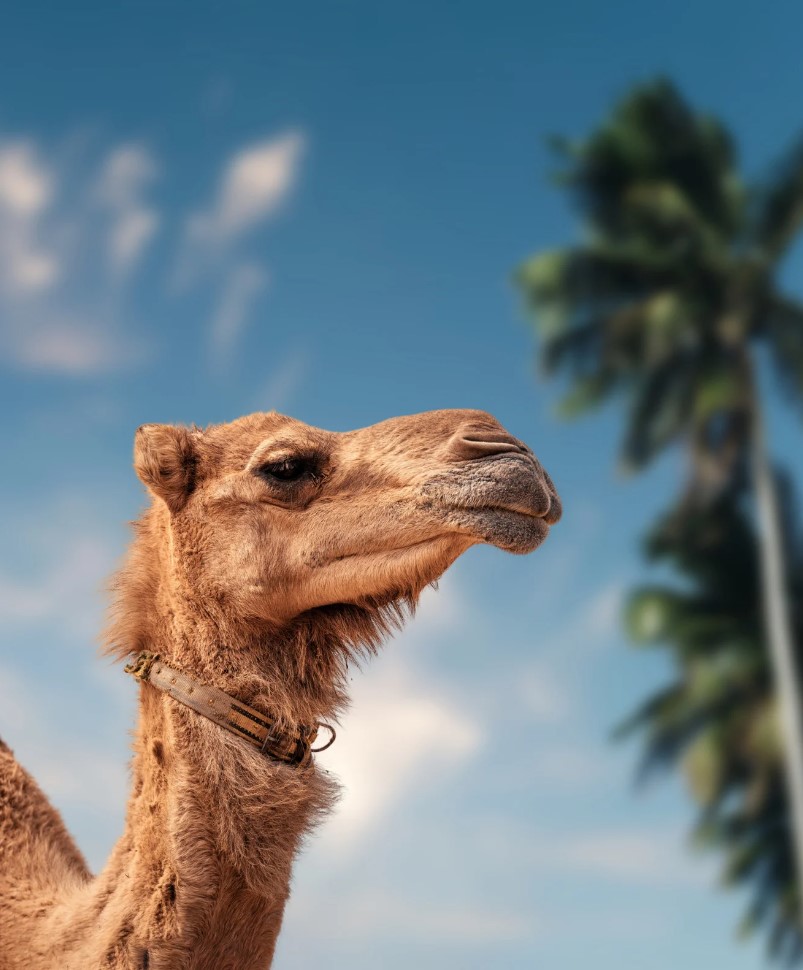
Use Of Camels İn Transportation
Camels have been used for transportation for centuries and continue to play an important role in many cultures. Their unique adaptations make them well-suited for traversing long distances across arid environments, such as deserts. In fact, camels are sometimes called the “ships of the desert” due to their ability to carry large loads and travel for extended periods of time without water.
- The use of camels for transportation dates back thousands of years, with evidence of their domestication in Arabia as early as 2500 BCE.
- Camels were particularly important in the trade routes that linked ancient civilizations in the Middle East, North Africa, and Central Asia.
- One factor that made camels ideal for transportation was their ability to store fat in their humps, which could be used as an energy source during long journeys.
| Camel Type | Region | Use |
|---|---|---|
| Dromedary | Middle East, North Africa | Goods, people, milk, meat |
| Bactrian | Central Asia, China | Goods, people |
Camels have also been used for military purposes throughout history. They were used by armies in the Middle East and North Africa, and by European colonial powers in their efforts to control territories in sub-Saharan Africa and the Middle East.
Today, camels are still used for transportation in many parts of the world. In some regions, they are used to transport goods and people within cities or between rural areas. In others, they are used for tourism purposes, such as camel safaris in the Sahara Desert.
Despite their importance for transportation, camels face a number of challenges in modern times. Habitat loss, hunting, and competition for resources with livestock are all threats to wild camel populations. Efforts are underway to protect and conserve wild camels, as well as to promote sustainable use of domesticated camels for transportation and other purposes.
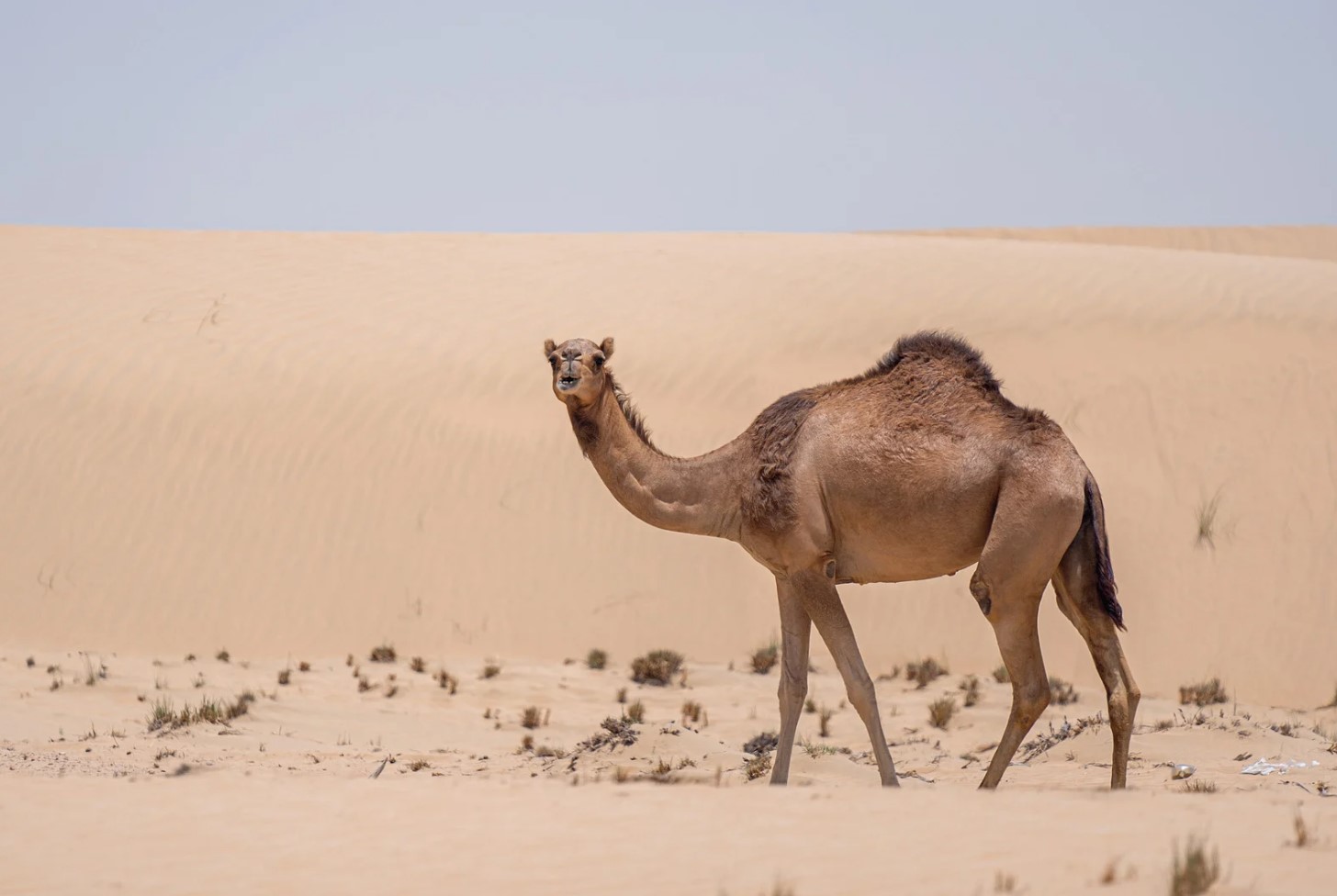
Importance Of Camels For Desert Life
Camels are known for their unique adaptations that allow them to thrive in the harsh desert environment. They play a crucial role in the ecosystem of arid regions and have been an integral part of human life in these areas for centuries. In this blog post, we will explore the importance of camels in desert life and how these majestic creatures have helped humans survive in some of the most extreme environments on earth.
Camels have been domesticated for thousands of years and are primarily used for transportation and as a source of food and milk. The ability to carry heavy loads for long distances over rough terrain makes them an ideal mode of transportation in the desert, where other methods such as cars and trucks are impractical. Their milk and meat are also important sources of nutrition for people living in desert regions.
- Camels are well adapted to conserve water, which allows them to survive in harsh desert environments with limited hydration. Unlike other mammals, they don’t pant and sweat excessively, which preserves their body fluids. They can go for weeks without drinking water, making them vital for transportation and communication in areas where water is scarce.
- In addition to their adaptability, camels are also hardy and resilient animals. They can withstand extreme temperatures and harsh desert conditions and have a long lifespan, making them a valuable asset to any community in need of resources and support.
Camel racing is another important aspect of desert culture and tradition. It’s a beloved sport in many countries with significant camel populations, and it provides a source of employment and income for many people. The racing industry is closely tied to camel breeding and selection, and the best racing camels are highly prized for their speed, agility, and endurance.
| Benefits of Camels for Desert Life |
|---|
| Transportation |
| Food and Milk |
| Water Conservation |
| Hardiness and Resilience |
| Cultural Significance |
The importance of camels in desert life cannot be overstated. They are an integral part of the social and economic fabric of many desert communities and continue to play a critical role in today’s world. However, camels face significant challenges in modern times, including habitat loss, disease, and climate change. As a result, conservation efforts are necessary to ensure the survival of these incredible animals for future generations.
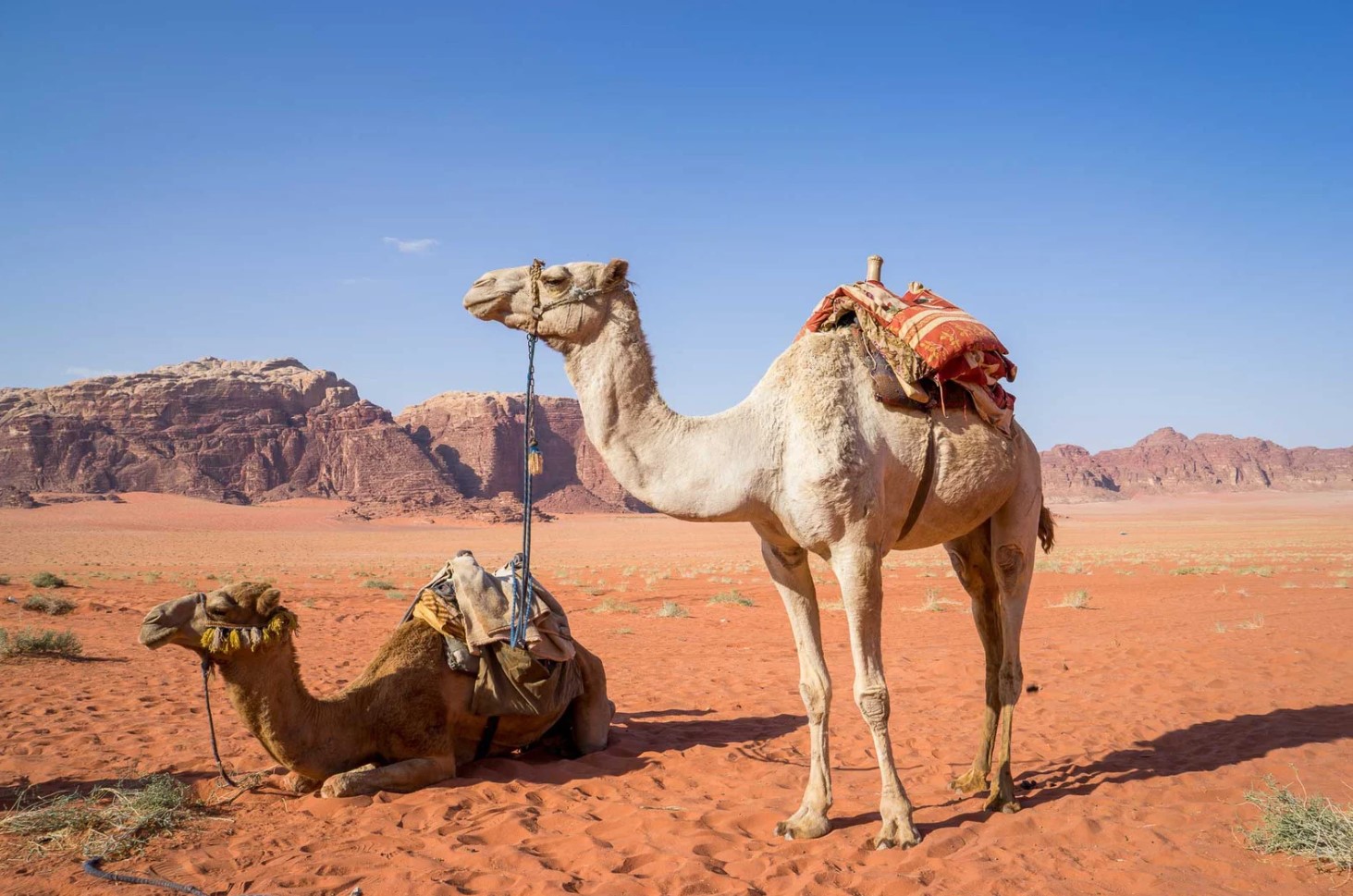
Camel Milk And İts Benefits
Camel milk is considered a superfood due to its incredible nutritional benefits. It is a rich source of vitamins and minerals, including vitamin C, calcium, and iron. In fact, camel milk contains three times the amount of vitamin C than cow’s milk. It is also low in fat and lactose, making it a great option for those with lactose intolerance.
In addition to its nutritional benefits, camel milk has also been found to have medicinal properties. Studies have shown that it can help with a range of health conditions, including diabetes, autism, and even cancer. Camel milk contains immune-boosting antibodies that can help to fight infections and diseases, making it a valuable supplement for those with weak immune systems.
- Camel milk is also rich in antioxidants that help to protect against cellular damage and premature aging.
- It has been found to be effective in reducing inflammation throughout the body.
- The fatty acids found in camel milk have been shown to improve brain function and cognitive abilities.
Due to its numerous health benefits, camel milk is becoming increasingly popular as a health supplement. It can be consumed raw or boiled, and is also used to make a range of products including cheese, ice cream, and soap. While it is still relatively expensive and difficult to find outside of camel-rearing regions, many health food stores and online retailers now offer camel milk products to cater to health-conscious consumers.
| Benefits of Camel Milk | Health Conditions it can help with |
|---|---|
| High in vitamins and minerals – especially vitamin C | Diabetes |
| Low in fat and lactose | Autism |
| Rich in antioxidants | Cancer |
| Reduces inflammation | Weak immune system |
| Improves brain function |
Overall, camel milk is a nutritious and healthy addition to your diet. Whether you’re looking to boost your immune system, improve your cognitive function, or simply try something new, camel milk is worth considering.
Camel Meat And İts Consumption
Camel meat may not be as popular as beef or chicken, but it is a staple food in many parts of the world. In fact, it is estimated that over 70% of the world’s camel meat is consumed in Somalia, where it is a valuable source of protein for the local population.
The meat from camels is often compared to beef, but it has a unique taste and texture that sets it apart. Like beef, camel meat can be cooked in a variety of ways, such as grilling, roasting, or stewing. It is also a lean meat, meaning it has less fat than beef or lamb.
Despite its nutritional value and unique flavor, camel meat is not commonly consumed in western countries. This is partly due to cultural differences and a lack of availability. However, in recent years, camel meat has been gaining popularity in some parts of Europe and North America, where it is often sold as a specialty meat in ethnic markets or restaurants.
| Benefits of Camel Meat |
|---|
| 1. High in protein |
| 2. Low in fat |
| 3. Rich in iron and zinc |
| 4. Contains B vitamins and Vitamin E |
Aside from its nutritional value, camel meat is also an important part of the cultural and culinary traditions of many countries. In the Middle East, for example, roasted camel meat is often served during special occasions and festivals. In Somalia, camel meat is a staple food that is eaten on a daily basis.
Overall, camel meat is a unique and nutritious food that is enjoyed by millions of people around the world. Whether grilled, roasted, or stewed, it is sure to delight the taste buds and provide a healthy source of protein and other vital nutrients.
Fur And Leather Products From Camels
A camel is a fascinating animal that has been domesticated by humans for thousands of years. In addition to their use as transportation and milk-producing animals, camels are also a source of fur and leather products. The fur and leather from camels are highly regarded for their quality and durability, making them a popular material for clothing and accessories.
Fur Products: The fur of a camel is soft, silky, and warm, making it ideal for use in cold climates. It is commonly used to create coats, hats, gloves, and other winter clothing items. Camel fur products are especially popular in Mongolia and other regions in Asia where the winters can be extremely harsh. Camel fur is also used for decorative purposes, such as in the creation of rugs and tapestries.
- Camel fur is soft, silky, and warm
- Ideal for use in cold climates
- Commonly used to create coats, hats, gloves, and other winter items
- Popular in Mongolia and other regions in Asia
- Used for decorative purposes like rugs and tapestries
Leather Products: Camel leather is tough, durable, and resistant to water damage. It is commonly used to create shoes, bags, belts, and other accessories. The leather is tanned and treated to create a smooth and supple texture that is comfortable to wear. Camel leather is also used to create furniture, such as chairs and sofas, due to its durability and strength.
- Camel leather is tough, durable, and resistant to water damage
- Commonly used to create shoes, bags, belts, and other accessories
- Tanned and treated to create a smooth and supple texture
- Used to create furniture, like chairs and sofas
The use of camel fur and leather products is an integral part of many cultures in the Middle East and Asia. However, it is important to ensure that these materials are obtained ethically and sustainably, so as not to harm the camel populations or the environment. With proper care and attention, products made from camel fur and leather can last for many years, making them a worthwhile investment for those who value quality and durability.
| Fur Products | Leather Products |
|---|---|
| Coats | Shoes |
| Hats | Bags |
| Gloves | Belts |
| Rugs and Tapestries | Furniture (chairs, sofas) |
Camel Racing As A Traditional Sport
Camel racing is one of the oldest and most popular traditional sports in the Middle East, dating back to ancient times. The sport involves racing camels, which are specifically bred for their speed and agility, and are trained by skilled trainers to compete in long-distance races that can range from 5 to 50 kilometers. In this blog post, we will explore the history and significance of camel racing as a traditional sport, as well as the challenges faced by camels in modern times.
Camel racing has been a part of the culture and heritage of the Middle East for more than 2,000 years, and was originally used as a means of transportation and a way to showcase the stamina and endurance of these magnificent animals.
- There are two types of camel racing – traditional and modern.
- Traditional camel racing involves racing on sand tracks in rural areas, and is typically held during the winter months.
- Modern camel racing, on the other hand, is a more organized and professional form of the sport, and is usually held at specially built stadiums with high-tech facilities and equipment.
Camel racing has also played an important role in the economy of the Middle East, as it has provided employment opportunities for trainers, jockeys, and breeders, and has also drawn tourists from around the world who come to watch the races.
| Countries where camel racing is popular | Famous camel racing festivals |
|---|---|
| United Arab Emirates, Saudi Arabia, Bahrain, Qatar, Oman | The Dubai World Cup, The Qatar Camel Festival, The King Abdulaziz Camel Festival |
Despite its popularity and cultural significance, camel racing has faced challenges in modern times, especially with regards to animal welfare. Many countries have banned the use of child jockeys, who were commonly used in the past, and have also implemented strict regulations to ensure the safety and well-being of the camels.
In conclusion, camel racing is a traditional sport that is deeply ingrained in the culture and heritage of the Middle East. Although it faces challenges in modern times, it remains a popular and significant part of the region’s cultural landscape.
Challenges Faced By Camels İn Modern Times
Challenges Faced By Camels In Modern Times
The camel has been a valuable asset to human society for thousands of years. It has served as transportation, food, and clothing for many people across the world. However, in modern times, camels face many challenges that are threatening their survival. One of the biggest challenges is the loss of habitat due to human encroachment. As human populations continue to grow, they require more land for housing and agriculture, which results in the destruction of camel habitats.
Another challenge faced by camels in modern times is climate change. As temperatures rise and rainfall patterns are disrupted, camels are finding it difficult to find reliable sources of food and water. This makes it even harder for them to survive in the harsh desert environments they call home. In addition, climate change is also causing more frequent and severe dust storms, which can be harmful to the health of camels as well as the livelihoods of the people who depend on them.
The global demand for camel products, such as meat and milk, is also putting pressure on camel populations. In some parts of the world, camels are being overexploited for their products, which can lead to overgrazing and the depletion of natural resources. This can have a devastating impact on the local economy as well as the environment.
- Loss of Habitat
- Climate Change
- Global Demand for Camel Products
Despite these challenges, efforts are being made to protect and conserve camel populations. Some organizations are working to educate people about the importance of preserving camel habitats and reducing human impact on the environment. Others are focusing on developing sustainable camel farming practices that can provide economic benefits without harming the environment or camel populations. Still, others are working to promote camel tourism, which can provide additional income for local communities and help to raise awareness of the importance of camel conservation.
It is clear that camels face many challenges in modern times, but there is hope for their survival. By working together to address these challenges, we can ensure that this valuable and unique animal continues to thrive for generations to come.
Future Prospects For Camel Conservation And Tourism
Camels are fascinating creatures that have played an important role in human life for centuries. As we move forward into the future, it is important to consider the future prospects for camel conservation and tourism. With their ability to withstand harsh desert conditions and carry heavy loads, camels have been used for transportation and trade for thousands of years. However, as technology advances and modes of transportation shift, the role of camels in human society is changing.
Despite this, there is still a great potential for camel conservation and tourism. In many parts of the world, camels are still used for transportation and trade, and there are also opportunities for eco-tourism and cultural experiences involving camels. The unique adaptations and behaviors of camels make them a fascinating subject for study and observation, and the conservation of these animals is important for preserving biodiversity and cultural heritage.
- One potential area for camel conservation and tourism is in the Middle East, where camels have played a significant role in local culture and history. Camel racing and camel festivals are popular events in many Middle Eastern countries, and there is also potential for camel trekking tours and desert camping experiences.
- In Africa, there are also opportunities for camel-based tourism and conservation. In countries such as Ethiopia and Somalia, camels are still used for transportation and trade, and camel treks through the desert can provide a unique and immersive experience for visitors.
It is important to consider the environmental impact of camel tourism and to ensure that practices are sustainable and respectful of local cultures and traditions. This includes ensuring that camels are not overworked or mistreated, and that tourism activities are carefully managed to prevent damage to fragile desert ecosystems.
| Pros | Cons |
|---|---|
|
|
Overall, the future prospects for camel conservation and tourism are promising. With careful planning and management, camels can continue to play an important role in human society and provide unique and valuable experiences for visitors.